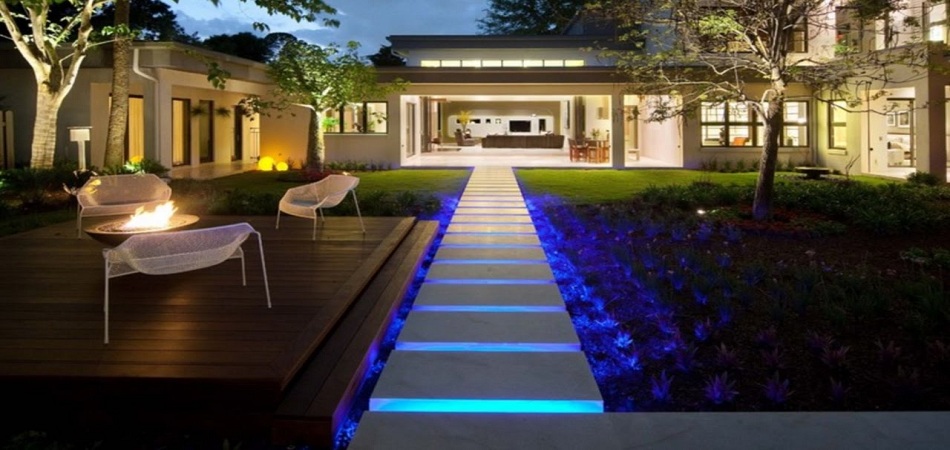Landscape lighting is also called garden lighting. Gardens and outdoor landscapes have an aesthetic appeal for an individual. Just like flowers, plantations, fountains, trees, shrubs, turf, pavers all are necessary for a beautiful and appealing environment, but the right amount and type of light can accentuate the existing beauty multifold times. The purpose of landscape lighting is beautifying and brightening gardens and landscapes by accentuating areas and creating patterns.
There are certain techniques to install landscape lighting so that maximum benefit and beauty can be derived from its installation. Since night-time use of a landscape requires good visibility, it is important that certain areas like steps, entry areas and walkways should be highlighted. Similarly, lights around the area of a landscape can define boundaries and set parameters. Also different types of landscaping require different types of lighting; hence it is imperative to know the utility and usage of different lights. For instance, specialty lights can create color accents and glows. Conversely, Moon glow lights create the feel of a moonlit landscape. On the other hand, Directional lights can highlight a feature, emphasizing it more at night than in the daylight.
Tips for Successful Landscape Lighting
Landscape lighting design is not an easy task. The objectives of safety, security, beauty, usage, energy efficiency and environmental concerns must be kept in mind when using landscape lighting. Sometimes objectives may interfere with one another like the beautification aspect can trigger environmental hazards or safety concerns may nullify the beautification effect. The following tips may provide useful when deciding appropriate lighting landscape techniques.
Diversify lighting. Use a variety of outdoor lighting types to create visual interest in landscape. From flood lights to spotlights and path-lights, select diverse light types for a combination of effects and results.
- Buy spotlights with glare guards, hence avoiding direct glare. Direct glare refers to light is shining directly into one’s eyes. Include down-lighting if possible.
- Spacing of Path lights should be distant and in a zigzag pattern.
- Balance lights equally among the entire property so that lighting is proportionate in every area.
- Keep your lighting style simple and subtle. Over emphasizing or under accentuating may lead to poor results.
Types of Landscape Lighting
Landscape lighting can be broadly divided into four main types;
Line Voltage: Line voltage is particularly apt for fixtures, security lighting, spot lighting or moon lighting for large landscape areas. Bulbs like incandescent, fluorescent, sodium mercury vapor, or metal halide are used with voltage ranging from 60-75 watts up to 175 or even 250 watts.
Solar
Solar lights are energy free lights. They are inexpensive but not useful for areas that do not receive a lot of sunshine since they are not very bright.
LED
LED’s (light emitting diodes) are energy efficient and long lasting. LED works to illuminate small spots and areas.
Low Voltage
Low voltage is another type of energy efficient lighting with low cost and ease of installation.





